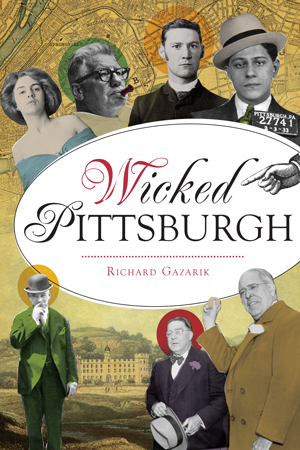
Politics, Pittsburgh-Style
November is election season, and no matter whether it’s a presidential year, a mid-term, or an off-year, with the falling of the leaves always comes the falling of the votes into the ballot box. So, too, come the accusations of voter fraud, of electoral irregularities, claims of rigging and election, and in truly special moments in American history, of hanging chads and of recount after recount after recount.
With recent court decisions striking down gerrymandering and electoral interference in states like North Carolina, the volatile life of the ballot box has been much in the news lately. The outcome of many of these challenges remains to be seen, but what remains true, however, is that those who are in power prefer to stay in power, a lesson illustrated nowhere better than Pittsburgh, Pennsylvania.

According to author Richard Gazarik, dirty electoral tricks had a home in the Steel City long before the arrival of Jim Crow in the South, or voter intimidation elsewhere. In his book Wicked Pittsburgh, he offers what amounts to a historical primer on just how to rig an election. So, without further ado, some out-of-the-box instructions on how to rig an election from Crime Capsule:
1. Falsify voter records (liberally). Gazarik notes right off the bat that one classic technique for dirty Pittsburgh politicians was to manipulate tax receipts, a piece of paperwork proving the voter paid the right taxes and lived in an eligible county. The issue that this practice constituted a poll tax notwithstanding, the main trick for the aspiring corrupt politician is to purchase as many of them as your local county official will allow: presto, thousands of votes, all with false names, all waiting to support you in November.
2. Invent voters. Gazarik also records the curious fact that in the 1800s and early 1900s, many voters were rather hard to find except on election day, for the simple reason that they didn’t exist. Investigators for area newspapers and federal agencies found ‘phantom voters’ living at addresses that constituted such diverse locations as “vacant houses, apartments, a barbershop, and a church,” not to mention in one case the boiler room of a private club. Four walls and a roof—and at least it had plumbing, right?
3. Rig the ballot ahead of time. One trick Pittsburghers used to see every so often was a pre-voted ballot with preferred candidates already marked, distributed in neighborhoods that were known political strongholds. If everybody already knew how they were going to vote before they even showed up, why not save them the trouble? Straight Democratic or Republican tickets all the way down—it’s a time-saver!

4. Dupe the electoral staff so you can alter the count. On election night of 1932, when it appeared FDR was winning by a landslide, many of the old-guard Pittsburgh politicians faced being swept out of office. This one from Gazarik’s research needs no context: “Nettie Llewellyn, an election board clerk, was counting ballots when she received a message that her mother was dying and quickly headed home before realizing she had been tricked.”
5. Employ “night-riders” to further tinker with the count at the polling place after it closed. That one also speaks for itself—and if that’s not enough, the worst of the worst used to stage street brawls and gunfights outside precincts during election season, closing entire polling places at a whim and pitting Pittsburgh police offers against local constables against city detectives, faction vs. faction. A house divided, right?
6. If you don’t like the result, just throw the ballot boxes in a river. After all, the Steel City is also called the City of Bridges. As Gazarik helpfully points out, you’ve got three to choose from, folks—so happy voting! Now, that’s how you rig an election.




